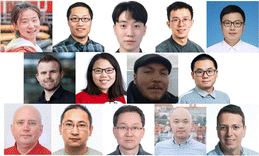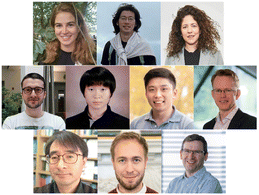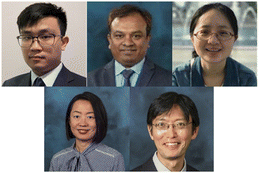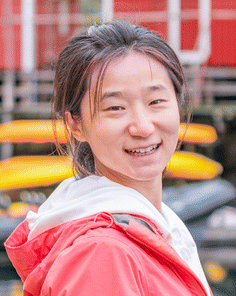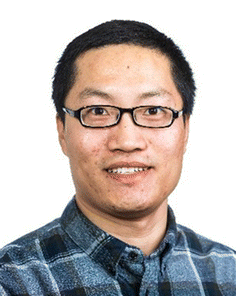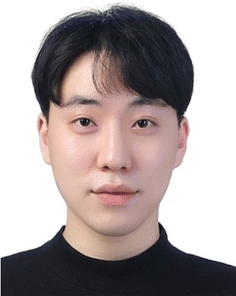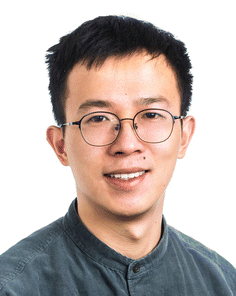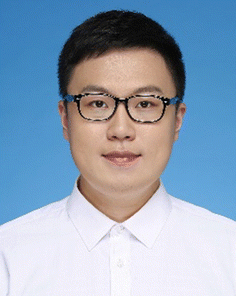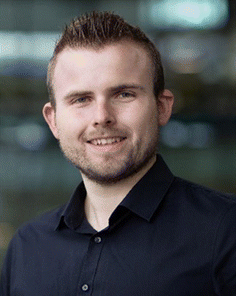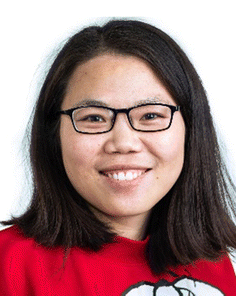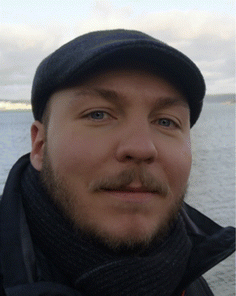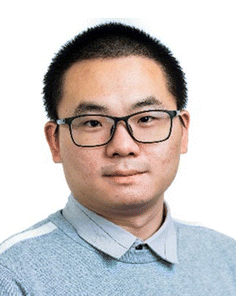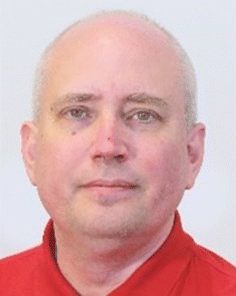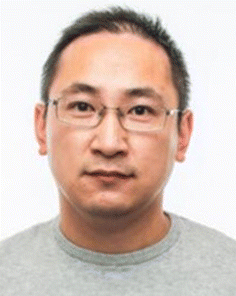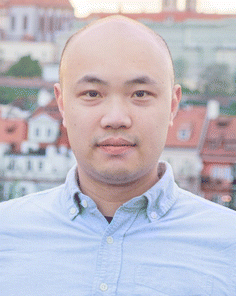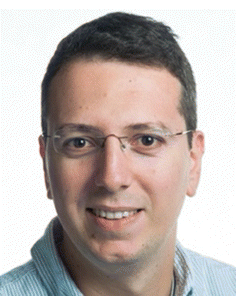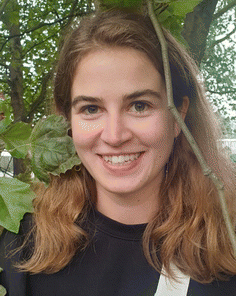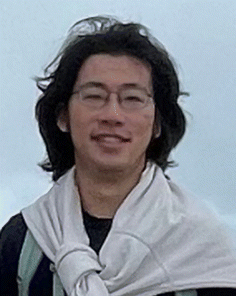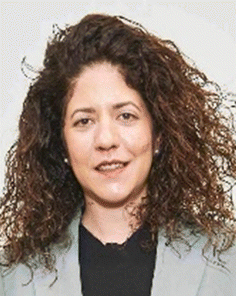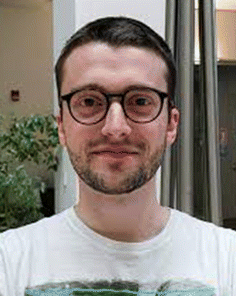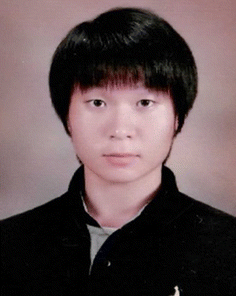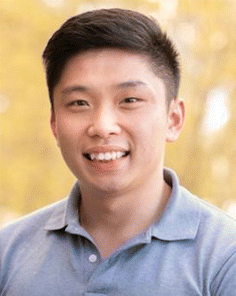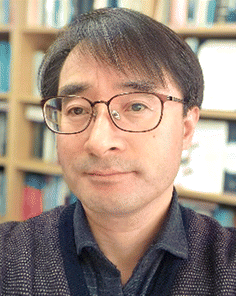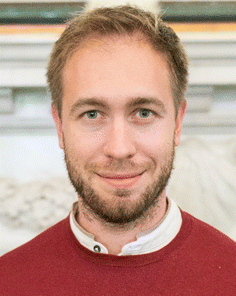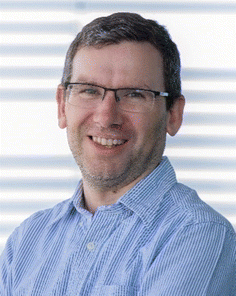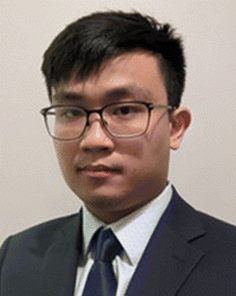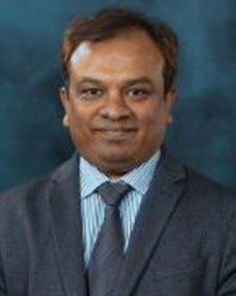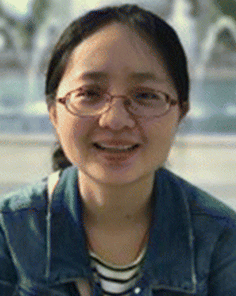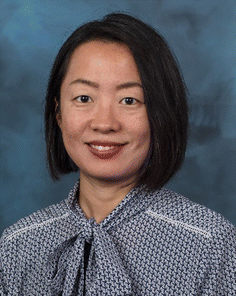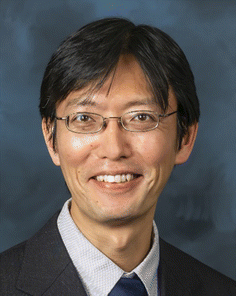Materials Horizons 2023 Outstanding Paper awards
We are delighted to introduce the winners of our 2023 Outstanding Paper awards in this Editorial.Our selection process remains the same as in previous years (see our introductory Editorial from 2019) retaining the focus on the science presented and the potential future impact of the work. The quality of the articles we published throughout 2023 was excellent, and therefore following from last year we have chosen to award not only our most Outstanding Paper, but also a runner-up and an Outstanding Review for 2023.
Please join us in congratulating our winners, we hope you enjoy reading their outstanding articles as much as we did.
Materials Horizons Outstanding Article 2023
Stable organic electrochemical neurons based on p-type and n-type ladder polymers
Han-Yan Wu, Jun-Da Huang, Sang Young Jeong, Tiefeng Liu, Ziang Wu, Tom van der Pol, Qingqing Wang, Marc-Antoine Stoeckel, Qifan Li, Mats Fahlman, Deyu Tu, Han Young Woo, Chi-Yuan Yang and Simone FabianoIn this outstanding article (DOI: https://doi.org/10.1039/D3MH00858D), the authors developed p-type ladder polymers exhibiting exceptional stability and performance in organic electrochemical transistors. Simple methylation of the pyrrole-benzothiazine-based ladder polymer backbone yields a mixed ionic-electronic conducting polymer with significantly enhanced mobility and volumetric capacitance compared to the non-methylated counterpart. By combining p-type and n-type ladder polymers, the authors demonstrated record-high gain complementary inverters with excellent stability. These advancements have enabled the development of artificial electrochemical neurons capable of biologically relevant firing frequencies and continuous operation, holding great potential for stable bioelectronic circuits capable of in-sensor computing.
Materials Horizons Outstanding Article runner-up 2023
A polymer library enables the rapid identification of a highly scalable and efficient donor material for organic solar cells
Martina Rimmele, Zhuoran Qiao, Julianna Panidi, Francesco Furlan, Chulyeon Lee, Wen Liang Tan, Christopher R. McNeill, Youngkyoo Kim, Nicola Gasparini and Martin HeeneyIn this outstanding article (DOI: https://doi.org/10.1039/D3MH00787A), the authors developed a two-step synthetic protocol for a high performing donor material. Often, synthetic scalability is overlooked in material design, leading to complex protocols. An innovative approach using nucleophilic aromatic substitution to incorporate various solubilizing groups into a benzo[c][1,2,5]thiadiazole acceptor comonomer is presented, enabling efficient synthesis of eleven donor polymers. FO6-T stands out, showing excellent solubility and achieving 15.4% power conversion efficiency with L8BO as the acceptor (15.2% with Y6), along with good device stability. FO6-T could be readily synthesized on a gram scale, and analysis of synthetic complexity underscored its suitability for potential large-scale applications.
Materials Horizons Outstanding Review 2023
Recent development of end-of-life strategies for plastic in industry and academia: bridging their gap for future deployment
Jackie Zheng, Md Arifuzzaman, Xiaomin Tang, Xi Chelsea Chen and Tomonori SaitoIn this outstanding review (DOI: https://doi.org/10.1039/D2MH01549H), the authors summarized the current state of the plastic recycling sector including the strengths and challenges of current commercial recycling process as well as the recent academic advancements. While mechanical recycling of plastics prevails in industry, challenges in their separation and thermal degradation persist. Bridging a gap to integrate new recycling processes from academia into current industrial practices will transform commercial recycling and plastic waste management, creating new economies. Furthermore, establishing closed-loop circularity of plastics by the combined efforts of academia and industry will significantly reduce the carbon and energy footprint toward achieving a net zero carbon society.
This study was made possible through a polymer upcycling project (Saito, Arifuzzaman, Zheng) at Oak Ridge National Laboratory (ORNL), supported by the US Department of Energy (DOE), Office of Science, Materials Sciences and Engineering Division, combined with an initial study on polymer compatibilizer (Chen, Tang, Saito) through the Laboratory Directed Research and Development Program of ORNL. Saito, Arifuzzaman, Zheng also attended DOE Energy I-Corps program, which gave an opportunity to further understand the industrial perspective of plastic recycling. The team also recently published “Selective deconstruction of mixed plastics by a tailored organocatalyst” (https://doi.org/10.1039/D3MH00801K) in Materials Horizons, reporting that the developed versatile organocatalyst can convert diverse consumer plastics and their mixed waste streams into valuable chemicals. Based on the technology, a start-up company, Re-Du, was launched (CEO Arifuzzaman). The team is literally pursuing bridging the gap by integrating the academic findings at ORNL into industrial processes.
Dr Michaela Muehlberg, Executive Editor
Professor Martina Stenzel, Editorial Board Chair
Author biographies
Materials Horizons Outstanding Article 2023
Stable organic electrochemical neurons based on p-type and n-type ladder polymers
Han-Yan Wu was born in Luoyang, China. She obtained her Bachelor’s degree in biological science from Huazhong University of Science and Technology in 2012 and her PhD in physical chemistry from the College of Chemistry and Molecular Engineering at Peking University in 2018, under the supervision of Professor Luhua Lai. After obtaining her PhD, she joined the Organic Electronics Laboratory at Linköping University as a postdoctoral researcher, collaborating with Associate Professor Simone Fabiano. Her current research interests include the design and synthesis of novel ladder-type conjugated polymers and their applications as mixed ion-electron conductors in organic electrochemical transistors, logic circuits, and neuromorphic circuits.
Jun-Da Huang received his BS degree in polymer materials from Tianjin University of Science and Technology in 2014. He is a PhD candidate at the Department of Science and Technology at Linköping University under the supervision of Professor Simone Fabiano and Assistant Professor Chi-Yuan Yang. His research focuses on the synthesis of conductive polymers and their applications in organic electronics and bioelectronics.
Sang Young Jeong is a PhD student in the Department of Chemistry, Korea University, Republic of Korea. He received his BS degree in chemistry from Kunsan National University, Republic of Korea, in 2020. His current research focuses on the design and synthesis of p- and n-type conjugated small molecules and polymers for organic optoelectronic devices such as solar cells, photodetectors, and transistors.
Tiefeng Liu is currently a post-doctoral researcher in Linköping University. He received his PhD from Huazhong University of Science and Technology (Wuhan, China) in 2020. His primary research interests are focused on conducting polymers, including studying their chemical and physical properties and applying them in opto-electronic devices.
Ziang Wu earned his Bachelor’s degree from the East China Normal University in 2015 and subsequently joined Professor Han Young Woo’s research group at Korea University as a PhD candidate. During his doctoral studies, his research primarily concentrated on the synthesis of organic semiconducting materials and their various applications, including organic solar cells, field-effect transistors, and photodetectors. Upon completing his PhD in 2022, he transitioned to the role of a researcher at the SINOPEC Beijing Research Institute of Chemical Industry. Presently, he is engaged in organometallic chemistry, focusing on the development of highly efficient catalysts for polyolefins.
Tom P. A. van der Pol is a postdoctoral fellow at the Organic Nanoelectronics (ONE) subgroup within the Laboratory of Organic Electronics (LOE) at Linköping University (LiU). In 2018, he received his MSc in chemical engineering and chemistry from the Eindhoven University of Technology (TU/e) following an internship with IBM Almaden in San Jose, California. Afterwards he returned to the Netherlands to perform his PhD research at the Molecular Materials and Nanosystems (M2N) group at TU/e under guidance of Professor René Janssen. During his PhD, he investigated the optoelectronic characterization of organic and perovskite thin film semiconductors for solar cell applications. After obtaining his PhD in 2022, he joined the ONE research group at LOE in 2023 on a postdoctoral scholarship granted to him to develop in operando characterization techniques for mixed ion-electron conducting organic materials (OMIECs). He has recently been awarded a Marie Skłodowska-Curie Actions (MSCA) postdoctoral fellowship to pursue research into the doping mechanisms of OMIECs using these techniques. His research interests lie in the optoelectronic characterization of novel (organic) semiconductors in an effort to unravel the underlying physical mechanisms governing their function.
Qingqing Wang received her MSc in chemistry from Tianjin University in 2018, followed by her PhD in Professor Mats Fahlman’s group at Linköping University in 2023. During her PhD studies, her thesis project focused on correlating the electronic structure and optoelectronic properties of organic semiconductors. Wang is currently a development engineer at n-ink AB, with a focus on producing and developing n-type inks, as well as tailoring their electronic properties to optimize their suitability for applications in organic photovoltaics.
Marc-Antoine Stoeckel completed his PhD in physical chemistry in 2019 at the University of Strasbourg under the guidance of Professor Paolo Samorì. His research focused on investigating the charge transport mechanism in organic crystals and hybrid perovskites, as well as studying the impact of ad hoc molecules on the semiconducting properties of 2D materials when interfaced with them. Following this, in 2020, he relocated to Sweden to pursue a postdoctoral position at Linköping University’s Laboratory of Organic Electronics. There, he is examining how molecular doping processes influence the properties of n-type conducting polymers. Stoeckel now holds a position as a WISE industrial postdoctoral researcher, bridging Linköping University and n-ink AB, a spin-off company specializing in n-type conducting inks that originated from the university.
Qifan Li is a PhD candidate at the Laboratory of Organic Electronics, Linköping University, Sweden. He received his Master’s degree in chemistry from Tianjin University, China, in 2020. He started his PhD project in 2021 in Simone Fabiano’s group, founded by the Marie Skłodowska-Curie HORATES project. His current research is focused on the synthesis of novel n-type conjugated polymers and investigation of their ink formulation in green solvents.
Mats Fahlman received his MSc in engineering physics (1991) and PhD in surface physics and chemistry (1995) from Linkoping University (LiU). After a post-doc at the Ohio State University he returned to LiU where he is currently a professor in surface physics and chemistry. He is active in the research of organic and perovskite semiconductors using primarily in-house and synchrotron radiation-based surface science techniques to explore materials and interfaces as well as their effect on device properties. He is currently serving as the director of the Laboratory of Organic Electronics at LiU and as the vice chair of the Scientific Council for Natural and Engineering Sciences at the Swedish Research Council.
Deyu Tu received his BS degree in mechanism engineering and automatization from Tsinghua University, Beijing, China, in 2003 and PhD in microelectronics and solid-state electronics from the Institute of Microelectronics, Chinese Academy of Sciences, Beijing, China, in 2008. From 2008 to 2010, he was a postdoctoral researcher with the National Nanotechnology Laboratory (NNL), Istituto Nanoscienze, Consiglio Nazionale delle Ricerche (CNR), Lecce, Italy. He joined the Division of Information Coding, ISY, Linköping University, Sweden, in 2010 as a postdoctoral fellow and he became an assistant professor in the same division in 2015. In 2018, he moved to the Laboratory of Organic Electronics, ITN, Linköping University and became an associate professor (Universitetslektor) in 2019. His research activities focus on device modelling and circuit design with organic/printed components, especially with organic electrochemical transistors (OECTs).
Han Young Woo earned his PhD in chemistry from the Korea Advanced Institute of Science and Technology (KAIST), Republic of Korea, in 1999. Following postdoctoral training at the University of California, Santa Barbara (UCSB) in the USA, he began his academic career as an assistant professor at Pusan National University, Busan, Korea. In 2015, he transitioned to Korea University, where he currently serves as a professor in the Department of Chemistry. His research focuses on designing and synthesizing conjugated polymers and polyelectrolytes to develop organic and polymer semiconductor materials with controlled optical and electrical properties. These materials find applications in organic optoelectronic devices such as solar cells, transistors, photodetectors, and water splitting. Through the development of novel organic optoelectronic materials, he has achieved new functionalities and high performance not attainable with traditional conjugated polymers. He actively conducts research to elucidate the operational mechanisms of organic/inorganic optoelectronic devices.
Chi-Yuan Yang was born in Changsha, China. He obtained his Bachelor’s degree in materials chemistry from Peking University in 2013, and later completed his PhD in organic chemistry at Peking University in 2018 under the supervision of Professor Jian Pei. In 2019, he went to Linköping University in Sweden, where he started his postdoc with Associate Professor Simone Fabiano in the Organic Electronics Laboratory. During this time, he, along with Associate Professor Fabiano, Professor Magnus Berggren, and Dr Marc-Antoine Stoeckel, co-founded n-ink AB, dedicated to the commercialization of n-type conducting polymer inks. In 2023, he became an assistant professor of organic electronics at Linköping University. His research focuses on the synthesis of n-type semiconducting and conducting polymers, their doping, and their application in electronic devices and circuits.
Simone Fabiano is an associate professor of organic electronics, a docent in applied physics, and the head of the Organic Nanoelectronics group at the Department of Science and Technology at Linköping University. He obtained his PhD in chemistry from the University of Palermo (Italy) in 2012. During his doctoral studies, he was a visiting scholar at the University of Groningen (The Netherlands). He then held postdoctoral positions at both Linköping University (2012–2015) and Northwestern University (2016–2017) before returning to Linköping University to establish his independent research group. In 2020, he founded n-Ink AB, a startup focusing on developing n-type organic conductive inks, where he serves as the Chief Scientific Officer and a board member. Since 2023, he has been the director of the Myfab@LiU. His group at Linköping University primarily focuses on developing novel doping strategies and organic mixed ionic-electronic conductors for printed electronics and neuromorphic hardware applications. Fabiano has authored more than 120 papers and filed 16 patents applications. He has received several awards, including starting (2017) and consolidator (2023) grants from the Swedish Research Council, as well as consolidator grants from the European Research Council in 2023. Fabiano has been a Wallenberg Academy Fellow since 2021.
Materials Horizons Outstanding Article runner-up 2023
A polymer library enables the rapid identification of a highly scalable and efficient donor material for organic solar cells
Martina Rimmele received her BSc and MSc from TU Wien (Vienna, Austria) and first joined Imperial College London in 2018, for an Erasmus+ internship, working on conjugated macrocycles. She then continued as a PhD researcher on a scholarship funded by EPSRC under the supervision of Professor Martin Heeney. After completing her PhD in January 2024, she is currently a postdoctoral research associate at Imperial College London (Department of Chemistry and Centre for Processable Electronics). Her research interests include the synthesis of conjugated polymers of low synthetic complexity, post-polymerisation modification and conjugated macrocycles.
Zhuoran Qiao is a second year PhD student in Nicola Gasparini’s group at Imperial College London under the supervision of Dr Nicola Gasparini and Professor Martin Heeney. His research focuses on developing near-infrared (NIR) and infrared (IR) organic photodetectors employing novel organic semiconductors and understanding the underlying mechanisms to improve device performance and stability. Before starting his PhD study, he obtained his MRes degree in plastic electronic materials at Imperial college London in 2022 followed by a research assistant position at Westlake University in Hangzhou, China, where he focused on synthesising non-fullerene acceptors for the application on semi-transparent organic solar cells. Prior to that, he received his BSc with first Honousr degree in physics at the University of Sheffield in 2020.
Julianna Panidi is an EPSRC David Clarke Fellow in the Department of Chemistry at Imperial College London. She is a Fellow of the 2024 European Talent Academy, and a Fellow of the Higher Education Academy.
Her research focuses on developing high-performing solution-processed electronics, such as thin film transistors and solar cells. She has studied methods to enhance the charge carrier mobility of organic semiconductors with the use of molecular dopants and explored their application in organic thin film transistors. During her DCF fellowship, she is developing sustainable solution-processed solar cells, primarily focusing on materials, methods, and solvents used during manufacturing. Primarily, focus is given to the careful consideration of raw materials and solvents to enable environmentally friendly manufacturing processes.
Francesco Furlan earned his MSc in materials science from the Università degli Studi di Padova (2019), followed by a PhD in chemistry from Imperial College London (2024). He was holder of a Marie Sklodowska-Curie scholarship and was a member of the HEL4CHIROLED consortium during his doctoral studies. His research focus is on the study of novel semiconducting materials and the development of devices for optoelectronic applications, with a specific focus on OLEDs, photodetectors and photovoltaics.
Chulyeon Lee received his BS and MS degrees, and PhD from the Department of Chemical Engineering (Kyungpook National University - KNU) in 2014, 2016 and 2021, respectively. He joined the Organic Nanoelectronics Laboratory (supervisor: Professor Y. Kim) as a graduate student in 2014 and started his research career in the field of organic electronics. In 2022 he joined Professor Martin Heeney’s group (Imperial College London) as a postdoc and worked briefly with Professor Nicola Gasparini at the same college. His major research area includes organic/inorganic hybrid materials, organic memory devices, transistor-based sensors, and photodetectors. He received outstanding poster awards from the 6th Asian Symposium on Advanced Materials (2017) and the 4th International Conference on Bioresources, Energy, Environment, and Materials Technology (2020). In 2021 he became a laureate of the prestigious Dean Award (College of Engineering, KNU). He has published 40 journal papers and contributed 76 conference presentations and filed 11 patents. He is currently working with Samsung Electronics.
Wen Liang (Liam) Tan is a scientist for the Powder Diffraction beamline at the Australian Synchrotron. He provides support to beamline users and assists in the maintenance and development of the beamline.
Tan’s research interests primarily revolve around thin-film-based organic and perovskite semiconductors for optoelectronic applications such as solar cells and field-effect transistors. He uses X-ray/neutron diffraction/scattering techniques, including X-ray diffraction (XRD), wide-angle scattering (WAXS) and small-angle scattering techniques (SAXS/SANS) to characterise precursor solutions and semiconducting thin films to explore their correlation with the functional properties of the optoelectronic devices. He specialises in grazing-incidence (GI) XRD/WAXS techniques for surface characterisation of thin films and has extensive experience in a range of in situ experiments including in situ heating and solution-to-solid phase transformation of thin films processed from solutions.
Chris McNeill is a professor of materials science and engineering at Monash University. He obtained a PhD in experimental physics from the University of Newcastle (Australia) and then spent nearly 6 years at the University of Cambridge where he was an EPSRC Advanced Research Fellow. He returned to Australia to Monash in 2011 supported by an ARC Future Fellowship and veski innovation fellowship and has since been promoted to full professor. His research interests include organic semiconductors, perovskite solar cells and synchrotron science. He is particularly interested in the intersection between the device physics and microstructure of solution-processed semiconductor devices.
Youngkyoo Kim received his BS and MS degrees, and PhD from the Department of Polymer Science and Engineering (Pusan National University, 1991–1996), and a second PhD from the Department of Physics (Imperial College London, 2006). He studied low-k polyimide nanocomposite thin films for microelectronic device applications in the Department of Chemistry (POSTECH) and organic light-emitting devices in collaboration with Professor T. Tsutsui’s group (Kyushu University). In 1996 he moved to the Institute for Advanced Engineering (IAE) and initialized the OLED project leading to the founding of NESS Display Corporation. In 2002 he joined Professor D.D.C. Bradley’s group (co-advisors: Professor J. Nelson and Professor J. R. Durrant) at Imperial College London and started polymer solar cell projects (funded by BP Solar). In 2006 he joined the LG R&D Center (currently LG Inotek) and managed future items including fuel cell components. In 2007 he joined the Department of Chemical Engineering (Kyungpook National University – KNU) and established the Organic Nanoelectronics Laboratory (ONELAB: https://one.knu.ac.kr) and the KNU Institute for Nanophotonics Applications (KINPA). He received several awards including the Excellent Research Award for Middle-standing Scientist from the Polymer Society of Korea and the prestigious KNU Scholar Award. He contributed as a leader to found the College of Advanced Science and Technology Convergence in KNU and as a Chief Adviser for the ReLioS battery program between Korea and Germany. He published ca. 300 journal papers and is currently working as an editorial board member for several international journals including npj Flexible Electronics.
Nicola Gasparini received his BSc and MSc degrees in chemistry and organic chemistry, and photochemistry and molecular materials, respectively, from the University of Bologna, Italy. In 2014 he joined the group of Professor Brabec in the Institute of Materials for Electronics and Energy Technology (i-MEET) at the Friedrich Alexander University Erlangen-Nürnberg (FAU) and received his PhD in 2017. In September 2017, he joined the King Abdullah University of Science and Technology (KAUST) as a postdoctoral fellow. In September 2019, he moved to the Department of Chemistry at Imperial College London as an independent researcher holding the Imperial College Research Fellowship. In early 2022, Gasparini was appointed Lecturer in chemistry (assistant professor, tenured) in the Department of Chemistry. His research interests are in organic and perovskite semiconductors, with particular interests in charge transport and recombination processes in solar cells and photodetectors.
Martin Heeney is a professor of chemical science at King Abdullah University of Science and Technology (KAUST) and professor of organic materials at Imperial College. He is a graduate of the University of East Anglia and received his PhD from the same institution in 1999. Following an industrial postdoc, he joined Merck Chemicals in 2000, eventually becoming project leader for the organic electronics team. He made the move to academia in 2007, joining the Materials Department at Queen Mary University of London as a senior lecturer. In 2009, he moved across London to join the Chemistry Department at Imperial College London, becoming full professor in 2014. His research interests include the design, synthesis and characterisation of conjugated materials for a variety of applications. He has been named five times by Thomson Reuters as a HighlyCited researcher in the field of Materials Science, is a recipient of the Royal Society of Chemistry Corday-Morgan medal (2013), the Royal Society of Chemistry Peter Day award (2020) and the Macro group UK medal (2020).
Materials Horizons Outstanding Review 2023:
Recent development of end-of-life strategies for plastic in industry and academia: bridging their gap for future deployment
Jackie Zheng is a PhD candidate in his fourth year at the Bredesen Center for Interdisciplinary Studies at the University of Tennessee – Oak Ridge Innovation Institute (UT-ORII) under the direction of Dr Tomonori Saito. His study is centered on developing new catalysts for plastic recycling and polymers for a circular economy of materials. Prior to enrolling in the PhD program at UT-ORII, Jackie earned a Bachelor of Science in Chemistry with Honors from Stony Brook University, where he conducted water desalination research under the supervision of Dr Benjamin Hsiao.
Md Arifuzzaman is the founder and CEO of Re-Du, an ORNL spinout startup company. Before starting the company, he was a postdoctoral associate at ORNL where his research was in plastic recycling. Arif is a multidisciplinary researcher with more than 10 years of experience in synthetic chemistry, with a major focus on catalyst development and optimization, polymer deconstruction, polymer upcycling, novel recyclable polymers, and more. His research has resulted in 22 peer-reviewed articles, a submitted nonprovisional international patent on mixed plastic deconstruction, a graduate research excellence award, and is an Innovation Crossroad Fellow as an entrepreneur. He received his PhD in organic chemistry from Iowa State University and an MS from Tennessee State University.
Xiaomin Tang is an R&D engineer at Intel. She worked as a postdoctoral associate at Oak Ridge National Lab (ORNL). She earned her PhD from Carnegie Mellon University in 2019 and worked at ORNL between 2020 and 2022. Her research at ORNL focused on polymer processing and characterization for the application in polymer upcycling. She has a wealth of knowledge in polymeric materials development for polymer upcycling, adhesives, as well as energy storage and conversion.
Xi (Chelsea) Chen is an R&D staff and polymer scientist at Oak Ridge National Laboratory (ORNL). She has extensive experience in polymers, composites, interfaces, electron microscopy and neutron and X-ray scattering. She leads programs in polymer upcycling and solid state batteries at ORNL. She earned her PhD in 2011 from the University of Michigan in Ann Arbor and then pursued postdoctoral research at the University of California, Berkeley/Lawrence Berkeley National Laboratory in California, CA. Upon finishing her postdoc, she took a position as a senior chemist at Dow Electronic Materials. She has been working at ORNL since 2017. She has 67 peer-reviewed publications and 1 issued patent. She received the 2022 American Chemical Society PMSE Division’s Young Investigator Award.
Tomonori Saito is a senior R&D staff member at ORNL and joint faculty associate professor at the University of Tennessee Knoxville. He is a polymer chemist who has extensive experience in leading various polymer science projects including polymer upcycling, dynamic polymers, energy storage, building materials, composites, additive manufacturing etc. He earned his PhD from Virginia Tech in 2008, conducted postdoctoral research at the Pennsylvania State University, and then started his career at ORNL in 2010. He has published more than 130 peer-reviewed articles, has 13 patents issued, won R&D 100 in 2012, 2016, 2019, and 2021 and has received several awards including the ORNL inventor of the year by Battelle in 2023.
| This journal is © The Royal Society of Chemistry 2024 |

